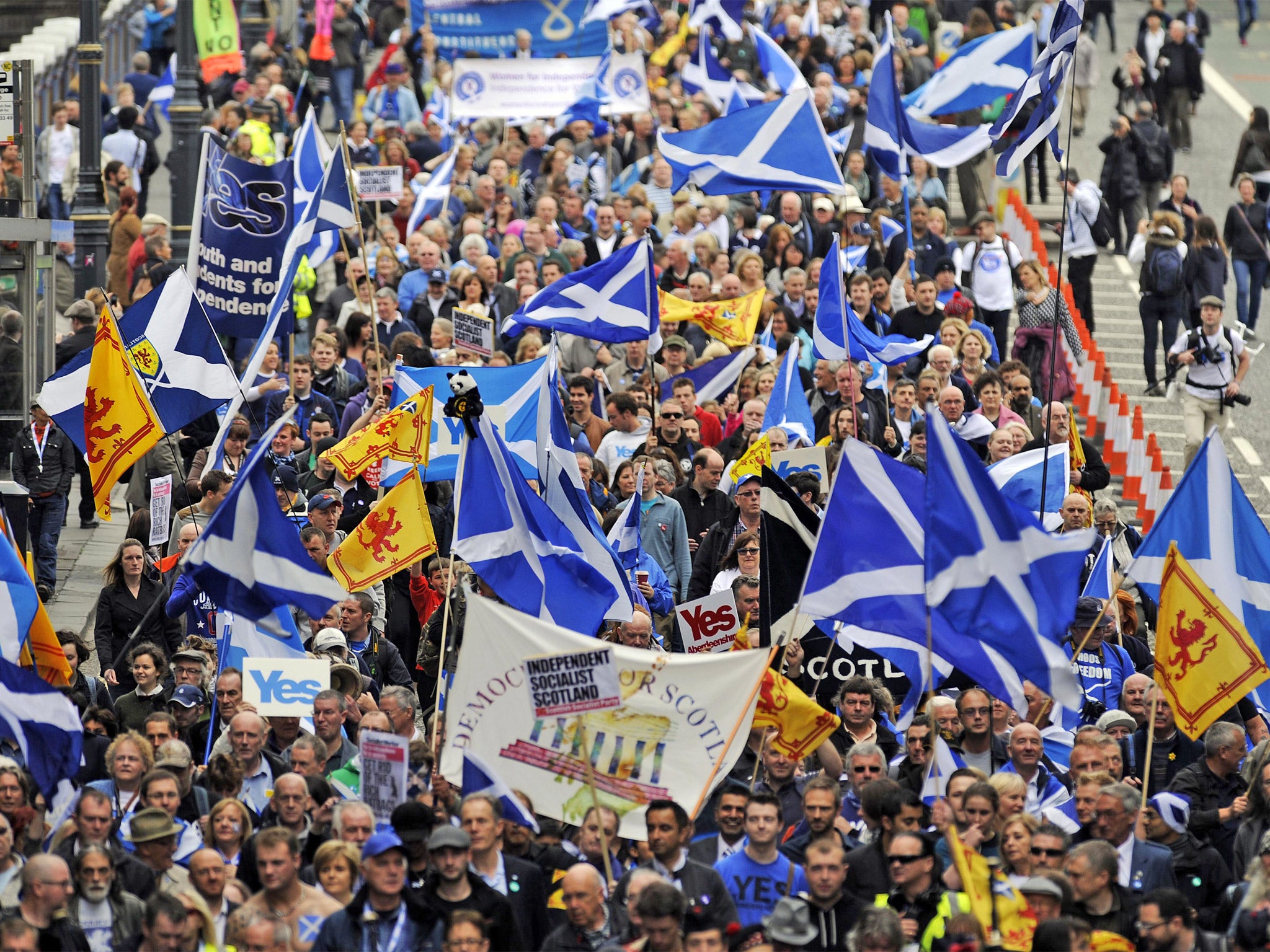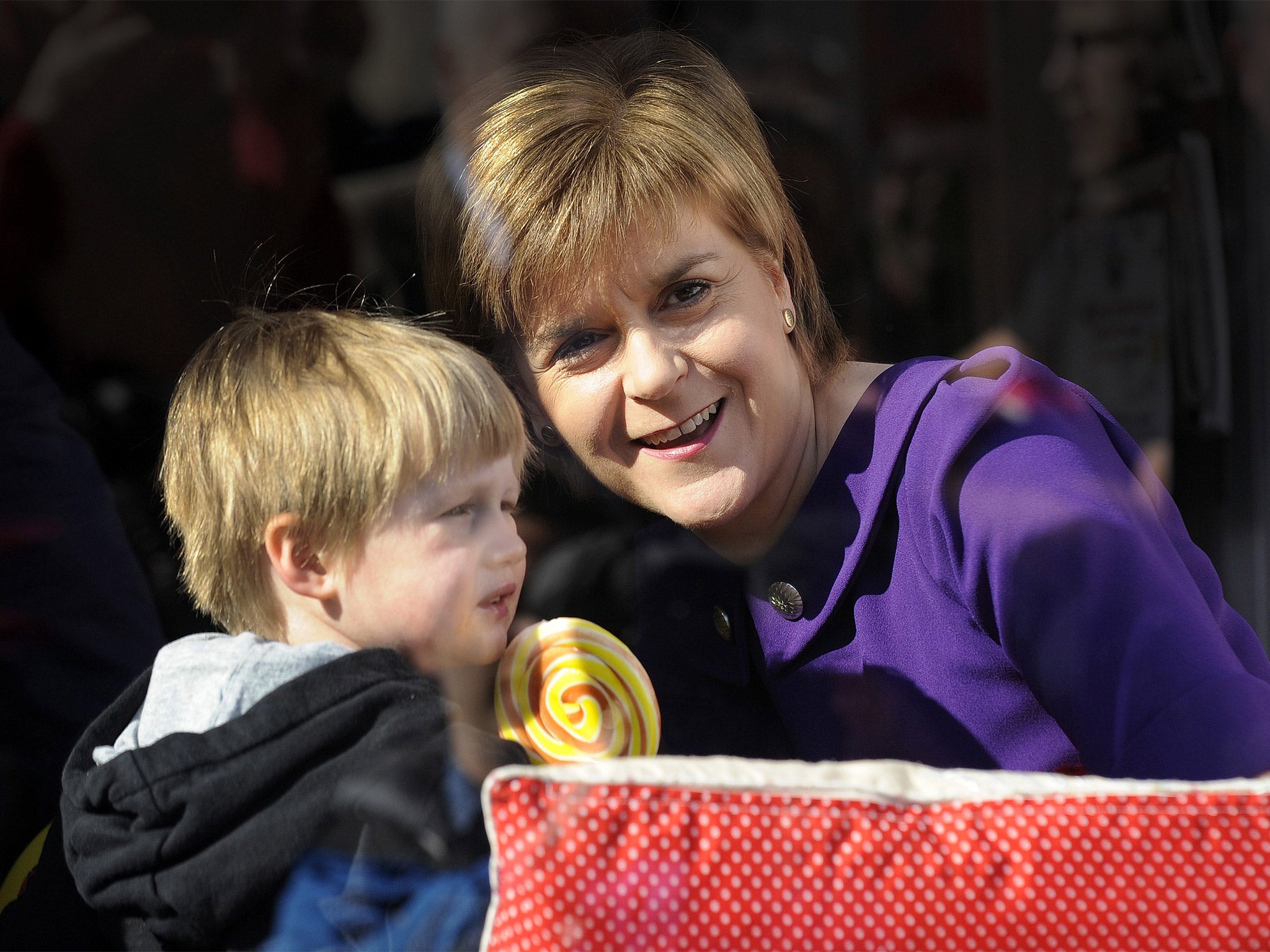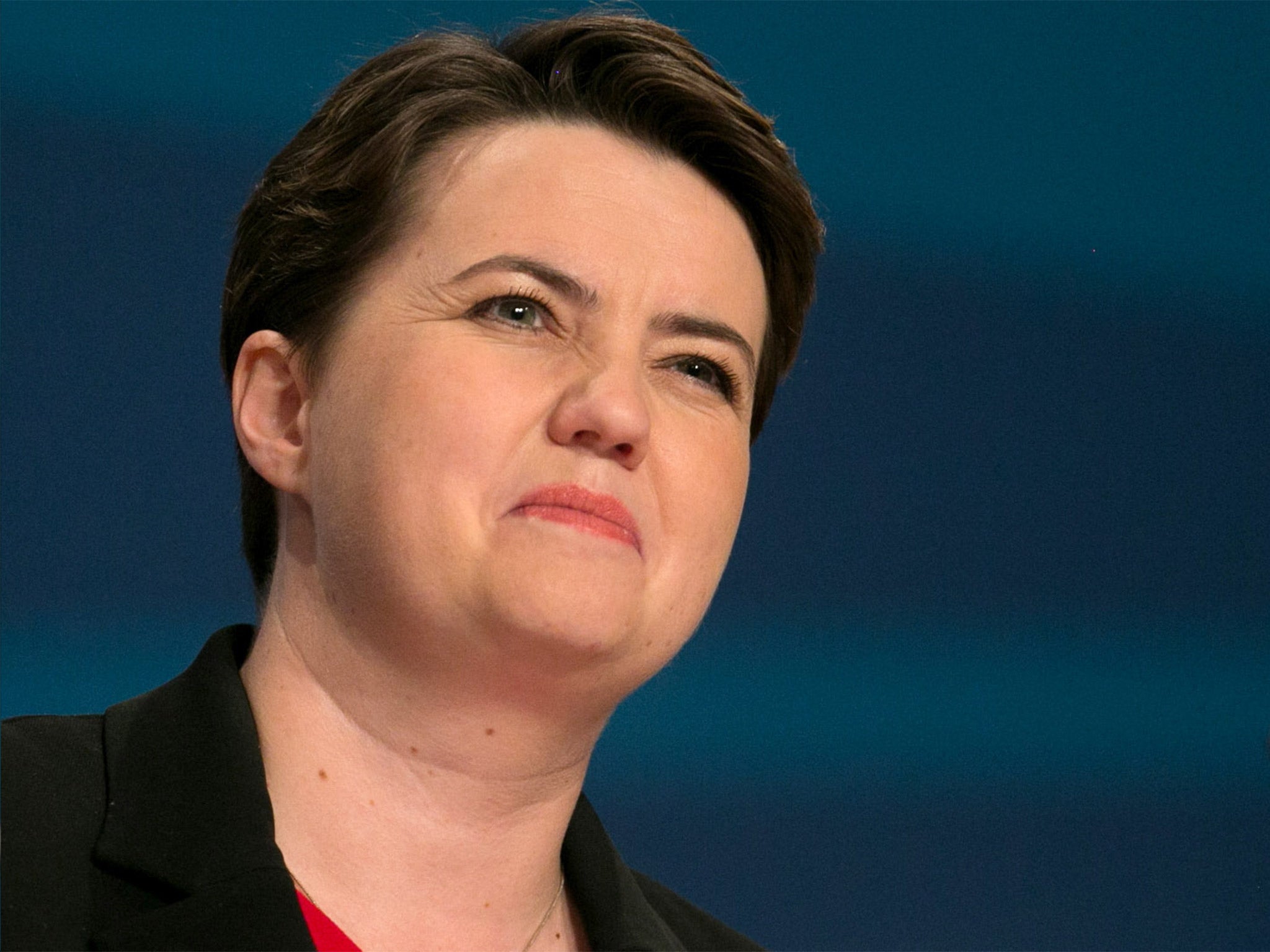General Election 2015: How the Scottish referendum has shaped this year's battle
Glasgow is much quieter than when it was the centre of the Yes movement

Your support helps us to tell the story
From reproductive rights to climate change to Big Tech, The Independent is on the ground when the story is developing. Whether it's investigating the financials of Elon Musk's pro-Trump PAC or producing our latest documentary, 'The A Word', which shines a light on the American women fighting for reproductive rights, we know how important it is to parse out the facts from the messaging.
At such a critical moment in US history, we need reporters on the ground. Your donation allows us to keep sending journalists to speak to both sides of the story.
The Independent is trusted by Americans across the entire political spectrum. And unlike many other quality news outlets, we choose not to lock Americans out of our reporting and analysis with paywalls. We believe quality journalism should be available to everyone, paid for by those who can afford it.
Your support makes all the difference.George Square in Glasgow is not what it once was. Only seven months ago it was the unofficial epicentre of the Yes movement, attracting pro-independence voters from all over Scotland. Barely a day went by without some sort of impromptu political rally breaking out. The morning after the referendum, it was also the place where Yes voters congregated to mourn their defeated dream.
These days the square is quieter, the men and women draped in Saltire flags replaced by besuited office workers eating their lunch in the spring sunshine. On Saturday, the pro-independence Hope Over Fear rally will briefly hark back to September. But in general, passers-by would be forgiven for thinking that Scotland had returned to normal, the referendum a fading memory. They would be wrong.
The referendum campaign, the vote and its aftermath provoked a political sea change in Scotland which few could have foreseen. The numbers speak for themselves: at 5pm on 18 September, the day of the referendum, SNP membership stood at 25,642. It is now more than 105,000.
Labour, once the dominant political force in Scotland, is now facing a wipeout at the general election – and it will have been led there by Jim Murphy, a key figure in the Better Together campaign. Nicola Sturgeon’s party, on the other hand, is predicted to hold as many as 50 of the country’s 59 Westminster seats after 7 May.
One of the people who joined the SNP the day after the referendum was Fiona Sarwar, 32, from Coupar Angus in Perthshire, who had previously campaigned for a Yes vote. “I felt like I wanted to get on and do something,” she said. “We’d been talking a lot about making change and doing things, and I didn’t want it to stop just because we’d lost the referendum. I think that was something that was shared.”
According to Blair Jenkins, the chief executive of Yes Scotland, the country has “changed forever” because of the events in September. “People got a very strong sense of their own democratic power during the referendum campaign, a real belief that their actions and opinions mattered more than ever before,” he said.
“That electrifying grassroots energy and self-confidence has carried on… so politics is now [from the] ground up and not top down. Scotland probably has the most politically educated electorate in Europe. We brought a lot of people into campaigning who would never have got involved had it not been for the referendum.”
Ms Sarwar added that a lot of Labour activists she knew felt “betrayed” by the party’s close alignment with the Conservatives during the often frenetic efforts to keep the Union together. Many have since joined the SNP, she said.

This view is supported by David Torrance, the SNP MSP for Kirkcaldy in Fife. Gordon Brown’s former constituency is Labour’s safest Scottish seat, where it enjoys a majority of more than 23,000 – but according to some predictions the swing to the SNP is so pronounced that even this may flip from red to yellow in May.
“It’s a Labour heartland, but they’re falling,” he said. “Their vote is just disappearing. People think they’ve abandoned their true values, and don’t like that during the referendum they were in bed with the Tories.”
Mr Brown’s rousing speeches last September were partly credited with saving the faltering Better Together campaign, which was led by his New Labour counterpart Alistair Darling. But he has since stood down as Kirkcaldy’s MP and has remained largely silent on his party’s collapse in the polls.
“I think Mr Brown’s intervention in the referendum was high profile, but what he promised the people has not been delivered,” Torrance said, referring to his pledge to help deliver more powers for Scotland. “It’s really backfired down the line. I think that’s one of the reasons he’s retiring, he saw the ballot box returns here.”
Are you undecided about who to vote for on 7 May? Are you confused about what the parties stand for and what they are offering? Take this interactive quiz to help you decide who to vote for...
Senior figures from the Yes campaign told The Independent that Labour’s fatal mistake was the “scorched earth” policy it pursued during the referendum campaign. “It took the view that all it had to do was get the result on September 18th and life would go back to normal,” one said.
“It doesn’t really seem to have thought beyond the referendum and if there would be any repercussions from the way it was conducting the campaign. The way the Labour Party behaved is now coming back to haunt it.”
All of the parties that hitched their fortunes to the referendum wagon were now “reaping what they sowed” when it came to the general election, they added, suggesting that what momentum Better Together had has been absorbed by Ruth Davidson, the leader of the Scottish Conservatives, who found her “passion and voice” in arguing against independence.
Thomas Kerr, an 18-year-old Tory activist from the East End of Glasgow, said the referendum gave her a chance to prove herself. “I think people saw Ruth during the referendum and they saw she was passionate, that she wasn’t just doing it for herself,” he said.
“We had a really good referendum, but Ruth had a fantastic one, and the momentum has carried on. I think the No campaign momentum has carried on with us rather than the Labour party.”

The pro-Union parties may also have thought they simply had to neutralise Alex Salmond to kill off Scottish independence. If so, they appear to have seriously underestimated Sturgeon, who carries less political baggage than her predecessor as SNP leader and is a less divisive figure, perhaps explaining why many voters south of the border appear to have warmed to her.
But the shadow of the referendum also brings with it dangers for the SNP, as was demonstrated when members of the BBC studio audience at the first Scottish leaders’ debate gasped in horror when Sturgeon refused to rule out a second one.
In the more conservative parts of Edinburgh, the Better Together heartland, “anyone but the SNP” is a common general election position. Many people on this side of the debate are considering voting tactically on 7 May for the candidate best placed to keep the nationalists out.
According to Annabel Goldie, the former leader of the Scottish Tories, the referendum is “a real off-putting subject for voters” which Sturgeon is keen to avoid. “The bottom line is that when Nicola says ‘I want to shake up Westminster’, what she really means is ‘I want to break up Britain’. She wants to use her MPs in Westminster as leverage,” she said.
“I’ve listened to Salmond sing this song for years, where he says ‘Vote SNP, we’ll look after you’ – and when people vote SNP, he says ‘Look at that support for independence – now we’ll give you a referendum’. That’s exactly where we’re heading for.”
Although the polls are still pointing to an SNP landslide victory in Scotland, many in the party are wary of celebrating too soon, fearing that their support may suddenly fall away in the voting booths. But whatever result the country wakes up to on 8 May, one thing is undeniable: it will have been largely shaped by the events of last September.
The Independent has got together with May2015.com to produce a poll of polls that produces the most up-to-date data in as close to real time as is possible.
Click the buttons below to explore how the main parties' fortunes have changed:
All data, polls and graphics are courtesy of May2015.com. Click through for daily analysis, in-depth features and all the data you need. (All historical data used is provided by UK Polling Report)
Join our commenting forum
Join thought-provoking conversations, follow other Independent readers and see their replies
Comments